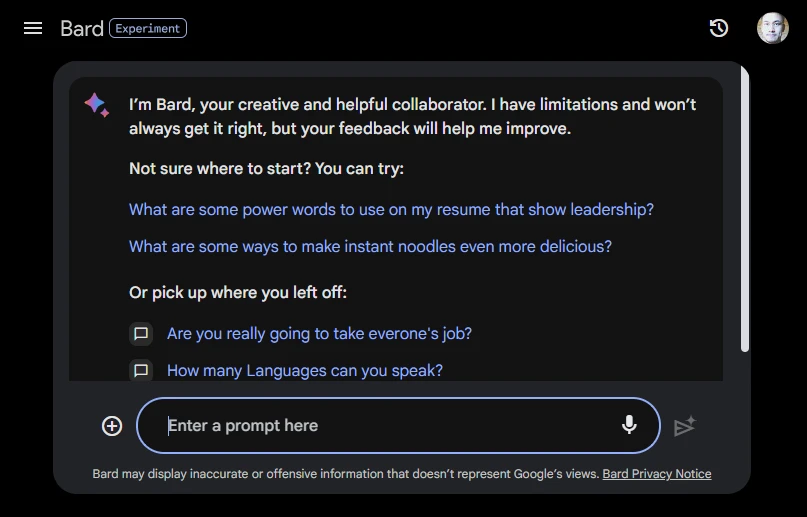Bard AI now supports 40 additional languages to attract the internet crowd hyped on conversational AI. It now supports both text and voice interactions and can provide voice output in 40 different languages. This expansion covers Arabic, Chinese (in both Simplified and Traditional forms), German, Hindi, Spanish and many others. Bard has expanded its geographical reach to include all 27 countries in the European Union and Brazil.
Bard had support for English, Japanese, and Korean from the beginning. Google aims to cover a significant portion of internet language usage.

Including Google Lens into Bard heralds an exciting chapter in text-image interaction. Now users can augment their text-based exchanges with images injected directly into the conversation. This integration presents refreshed opportunities for imagination stimulation and creativity enhancement.
Over 40 languages now have text-to-speech capabilities. This has improved the auditory dimension significantly. When you engage with Hindi, Spanish, or English, listening to responses aloud can enhance your idea generation process. Hearing a language spoken aloud can help one understand and appreciate its subtleties and complexities better. Listening to responses in your own native languages can be beneficial, whether you’re brainstorming ideas or working on a project.
Bard now provides ways to catalog past conversations. This helps maintain organization of your thoughts and questions. Users can now pin important conversations and rename them. This leads to easier identification among multiple ongoing threads, enhancing functionality and user experience.
You can share parts or entire conversations with others using shareable links. Google has made it easy for you to share your creative journey with Bard. No need to struggle with copy/pasting long text anymore!
Bard now offers five ways to modify its responses. You can make them simpler or more elaborate, elongate or abbreviate them, or shift the tone towards professional or casual. With these options, you can create a response that matches your vision perfectly.
Python coders can now export their work using Bard’s new feature. They do not limit this feature to Google Colab anymore. It also works with Replit. This makes it easier for coders to transition between different programming tasks.
Go ahead and try Bard. Google is doing great things by making AI chat more interactive and accessible. As always, remember not to share any personal or business details with it. Bard is not a scientist and is not free from bias and it could make things up.
As Bard is in testing, human analysts may also analyze your conversation to make the product better. But go wild with your random questions and curiosities that you’ve always wondered about.


